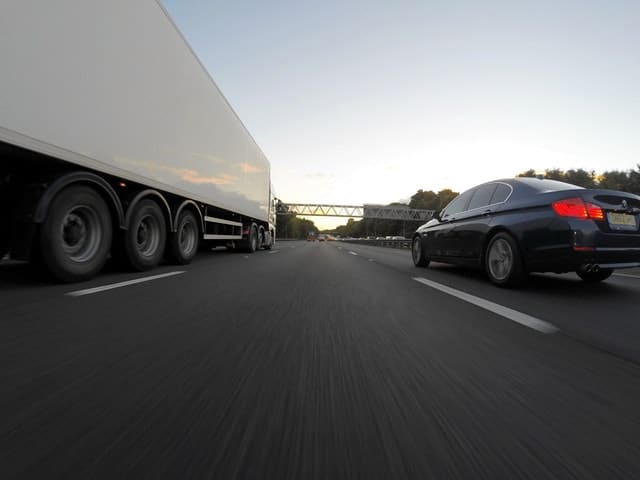
The population of the country has grown exponentially as people are moving to city, suburban and rural locations. This population growth has also caused an increased need for more products and shipments in all industries.
Trucks are moving raw materials to manufacturers, fruits and meat products to grocery stores, and end products to retailers. This growth in demand requires warehouses and distribution centers to invest in larger fleet vehicles. These larger trailer trucks are jockeying for space on rural roads and interstate highways. They are moving at great speeds around passenger cars, buses and other vehicles, increasing the chances of a dangerous accident on the road.
The Motor Carrier Management Information System (MCMIS) reported that in 2016, large trucks accounted for 4,213 fatal accidents and 55,633 injury crashes, according to the Federal Motor Carrier Safety Administration (FMCSA). In addition, the Insurance Institute of Highway Safety (IIHS) reported that fatality crashes resulted in 3,986 deaths.
Tractor trailers were involved in the deadliest accidents when compared to single unit trucks, as there were 2,920 deaths in 2016, stated IIHS. While single-trailer trucks dominated in traffic crashes at 62 percent, double trailers also became a troubling concern with 3 percent involved in crashes while triple-trailer trucks accounted for less than 0.1 percent.
When towing trailers, drivers can experience problems trying to control the fast-moving vehicle during pre-crash events. The trailers are normally stacked with pallets and shipping crates, causing the vehicle to be heavier during travel that can cause the trailer to sway at certain speeds and road conditions.
When it came to pre-crash statistics, these larger trucks encountered another vehicle, animal, pedestrian or object in the road lane at roughly 73 percent of the time, detailed the FMSCA Crash File. Loss of control and the trucks’ own movement accounted to 23 percent of crashes. Another important statistic from the FMSCA revealed that drivers coded accidents as “vehicle-related factors,” “tires” and “other motor vehicles” as the most common causes of fatal crashes.
Currently, only 23 states allow for combination triple-trailer trucks in 2018, according to Consumer Reports. As more passenger vehicles and big rigs share the road, fleet managers are looking at technology to offer more safety protections. Anti-lock brakes, electronic stability controls and onboard electronic logging devices are standard technologies in the industry today.
Many companies are upgrading their larger trucks with FCW/crash mitigation systems. The Securing America’s Future Energy (SAFE) think tank expects that about 40 percent of large truck fleets will have these systems installed by 2020, as stated by Consumer Reports. However, there are no government mandates regarding these crash mitigation systems. Trucking associations have lobbied for less government involvement when it came to mandating all trucks to be outfitted with advanced safety systems.
For owner operators of large rigs, many drivers cite costs as a factor when it involves obtaining new safety systems. With prices ranging in the hundreds of thousands for a new vehicle purchase, these new trucks don’t fit into their budgets. Retrofitting older vehicles with these systems could drastically cut down on safety system prices. However, other truck drivers simply don’t believe that these systems are necessary. Instead, they cite their own driving records with few crashes as reasons why they are safe on the road. Other drivers are placing the blame on distracted passenger vehicle drivers as the reason for big truck accidents.
Companies across the country are also looking to improve truck safety with additional training measures for their drivers. With newer vehicle enhancements, technologies, and traffic patterns, drivers can gain immense benefits from continuous training practices. This training will provide large truck drivers with increased experience and driving versatility if they find themselves moving from hauling single-trailer trucks up to double-trailer and triple-trailer trucks.
Knowing how each vehicle handles differently with different loads can lower the chances of driver mistakes. Companies can also make the decision to invest in better fleet management initiatives by hiring more drivers to operate smaller trucks that are not overloaded.
In addition, they can revamp their delivery schedules to ensure their drivers are taking all safety precautions and are not being overworked to fulfill difficult delivery timelines. When drivers are set to short delivery windows, this issue may cause many of them to speed or make unnecessary driving decisions that result in fatal crashes.
Lower speeds, correctly loaded trucks, investing in safety technologies, and limiting the number of trailers that a single truck pulls can end of saving lives. These measures can ensure that both passenger vehicle drivers and truck drivers reach home safely.
Duboff & Associates has handled and continues to handle Big Rig cases in MD, D.C., CA, and MA. These are not just large auto wrecks. Don’t let anyone fool you. If you are the victim or relative of someone injured from trucking negligence, call us now for a free consultation.
Filed Under:
Comments are closed.